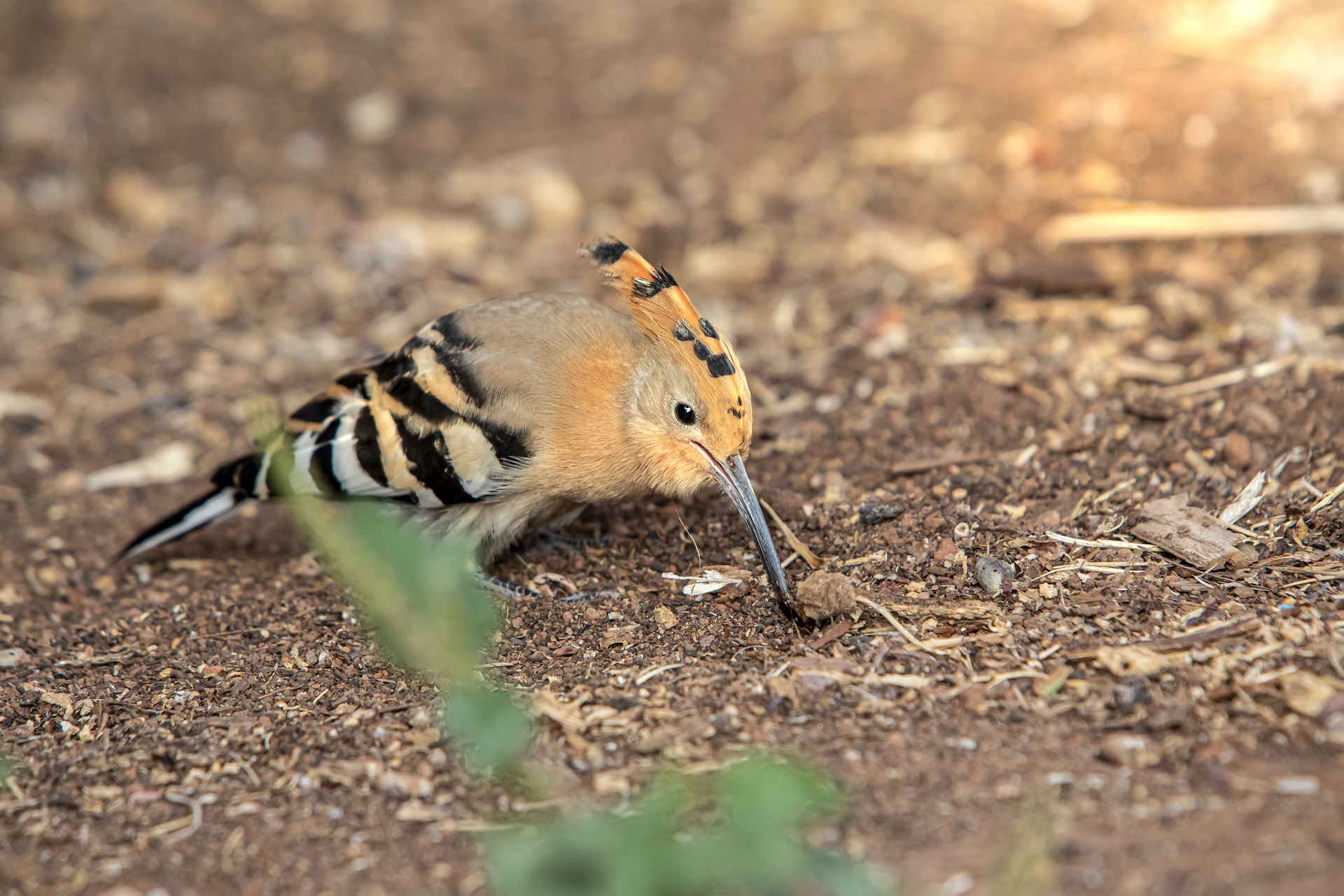The Eurasian Hoopoe (Upupa epops) is a striking and unmistakable bird known for its distinctive crown of feathers, long bill, and unique “hoo-poo” call. This bird is widely distributed across Europe, Asia, and parts of North Africa.
Description
- Size:
- The Eurasian Hoopoe is a medium-sized bird, measuring around 25–32 cm (9.8–12.6 inches) in length with a wingspan of 44–48 cm (17–19 inches). It typically weighs between 46–89 grams (1.6–3.1 ounces).
- Appearance:
- Crest: The most distinctive feature of the hoopoe is its long, orange-brown crest, tipped with black, which it can fan out or retract depending on its mood or when startled.
- Plumage: Its plumage is a mix of buff, orange, and brown colors, with striking black and white stripes on its wings and tail.
- Bill: The hoopoe has a long, slender, slightly curved bill, which it uses to probe the ground for food.
- Eyes and Legs: It has dark eyes and strong, greyish legs suited for walking and hopping on the ground.
Habitat and Range
- Range:
- The Eurasian Hoopoe is widely distributed across Europe, Asia, and North Africa. It is a migratory species in the northern parts of its range, moving to warmer climates during winter, while populations in Africa tend to be resident year-round.
- Habitat:
- This species favors open landscapes with short grass, such as savannas, grasslands, orchards, vineyards, and areas with scattered trees. It often avoids dense forests and prefers regions where it can forage easily on the ground.
Behavior
- Feeding:
- The hoopoe primarily feeds on insects and other invertebrates. Its diet includes beetles, crickets, locusts, ants, and worms, which it finds by probing the soil with its long bill. It is also known to eat small reptiles, seeds, and berries on occasion.
- Nesting:
- Eurasian Hoopoes typically nest in cavities, such as tree holes, rock crevices, or even walls. The female lays 5 to 8 eggs, which are incubated for about 15–18 days. The chicks are fed by both parents and fledge in approximately 25–29 days.
- Vocalization:
- The hoopoe’s call is a distinctive “hoo-poo” or “oop-oop-oop,” which it repeats several times. This call is often heard during the breeding season and is how the bird got its name.
Migration
- Migratory Patterns:
- Northern populations of the Eurasian Hoopoe are migratory, traveling to southern Europe, sub-Saharan Africa, or South Asia during the winter. They return to their breeding grounds in the spring. Birds in warmer climates may be resident or undertake short-distance migrations.
Conservation
- Status:
- The Eurasian Hoopoe is listed as “Least Concern” by the IUCN, thanks to its widespread range and stable population. However, in some areas, populations have declined due to habitat loss, pesticides, and changes in agricultural practices that reduce food availability.
- Cultural Significance:
- The hoopoe is celebrated in various cultures and is the national bird of Israel. It is also featured in numerous folktales and myths across different regions.
Summary
The Eurasian Hoopoe (Upupa epops) is a distinctive and culturally significant bird, known for its striking appearance, unique crest, and melodious call. Widely distributed across Europe, Asia, and Africa, the hoopoe plays an important role in controlling insect populations. Despite facing some local threats, its overall population remains stable, making it a bird of least concern in conservation terms.
Visited 812 times, 25 visit(s) today
Views: 1278
Subscribe to the newsletter:
